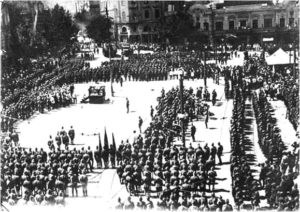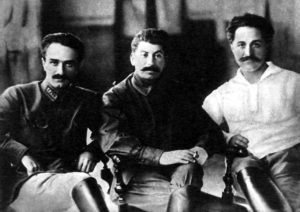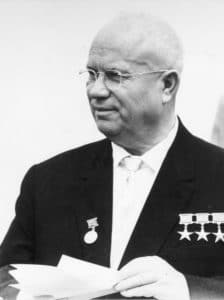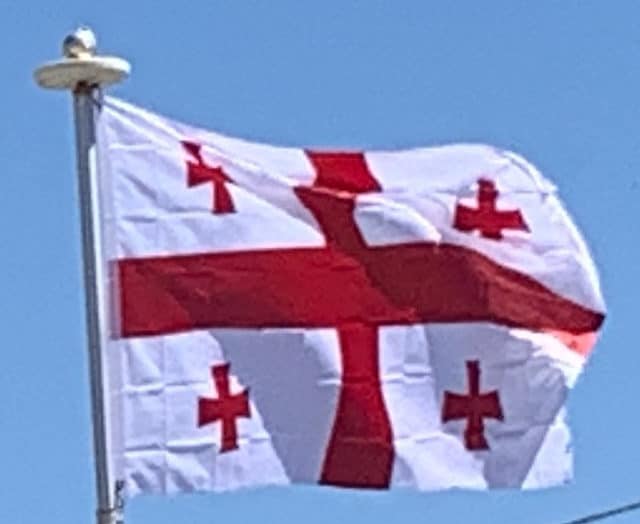
There remained significant opposition to the Bolsheviks in Georgia, which was unindustrialized and viewed as socially backward, and this culminated in the August Uprising of 1924. Soviet rule was firmly established only after the insurrection was swiftly defeated. Georgia would remain an unindustrialized periphery of the USSR until the first five-year plan when it would become a major center for textile goods. Later, in 1936, the TSFSR was dissolved and Georgia emerged as a union republic: the Georgian Soviet Socialist Republic.
Joseph Stalin, an ethnic Georgian born Iosif Vissarionovich Jugashvili (იოსებ ბესარიონის ძე ჯუღაშვილი) in Gori, was prominent among the Bolsheviks. Stalin was to rise to the highest position, leading the Soviet Union from the mid–1920s until his death on 5 March 1953.

In June 1941, Germany invaded the Soviet Union on an immediate course towards Caucasian oil fields and munitions factories. They never reached Georgia, however, and almost 700,000 Georgians fought in the Red Army to repel the invaders and advance towards Berlin. Of them, an estimated 350,000 were killed. The Georgian uprising on Texel against the Germans was the last battle of the World War II.
After Stalin’s death, Nikita Khrushchev became the leader of the Soviet Union and implemented a policy of de-Stalinization. This was nowhere else more publicly and violently opposed than in Georgia, where in 1956 riots broke out upon the release of Khruschev’s public denunciation of Stalin and led to the death of nearly 100 students.

Throughout the remainder of the Soviet period, Georgia’s economy continued to grow and experience significant improvement, though it increasingly exhibited blatant corruption and alienation of the government from the people. With the beginning of perestroika in 1986, the Georgian Communist leadership proved so incapable of handling the changes that most Georgians, including rank and file Communists, concluded that the only way forward was a break from the existing Soviet system.
Georgia After Restoration of Independence:
On 9 April 1991, shortly before the collapse of the Soviet Union, the Supreme Council of Georgia declared independence after a referendum held on 31 March 1991. On 26 May 1991, Gamsakhurdia was elected as the first President of independent Georgia. Gamsakhurdia stoked Georgian nationalism and vowed to assert Tbilisi’s authority over regions such as Abkhazia and South Ossetia that had been classified as autonomous oblasts under the Soviet Union.
He was soon deposed in a bloody coup d’état, from 22 December 1991 to 6 January 1992. The coup was instigated by part of the National Guards and a paramilitary organization called “Mkhedrioni” (“horsemen”). The country became embroiled in a bitter civil war, which lasted until nearly 1995. Eduard Shevardnadze (Soviet Minister of Foreign Affairs from 1985 to 1991) returned to Georgia in 1992 and joined the leaders of the coup—Tengiz Kitovani and Jaba Ioseliani—to head a triumvirate called “The State Council”.
